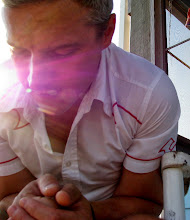I had occasion to read (ok, browse heavily) Kevin Young’s book, “To Repel Ghosts” which is a fairly capacious tour of Black art, music, and popular culture. The book is a kind of cycle whose through-line centers on the life and work of painter, Jean-Michel Basquiat. But to read this book is to also be consciously aware of its acrobatics, its variants, and its rhythms, to the point where one may begin to seize upon the formal aspects of its poetics as a character or even a narrative unto itself. It occurred to me that there are a few rare occasions when a certain poem in "To Repel Ghosts (most of the book's poems are composed of terse, unrhymed triplets) turns on what I would call a classic Rap rhyme, which is to say an almost immediately-satisfied perfect rhyme (you know what i'm talking about), and in TRG's case, we're not talking about this kind of rhyme as full scheme or as being sustained for poem-in-full—but only in that one moment. These moments seem precious (in a good way), as they occur only a dozen or so times (I don’t own the book, so I should really go back to it to confirm). Anyway, I got to thinking about Emily Dickinson who, while her poems were not like traditional hymns, did use traditional hymn meter (often as a dreaming-off point) and occasionally had something akin to the traditional turn or classic moment, almost as homage to that convention...much like Young. I’d like to study those moments in both authors’. Something about the comparison of these two has started a bit of traffic in me…and I realize, too, that less is so much more, and more than more.
___________________________________________________________________
___________________________________________________________________
In completely other news: I’ve become mildly obsessed with the idea of the Rookie Card as deep metaphor, or as a kind of deep image even.
***
Oh, yeah. fill in the blank:
"You have built it, and indeed they do come, though they might not return unless you continue to ___________________."



